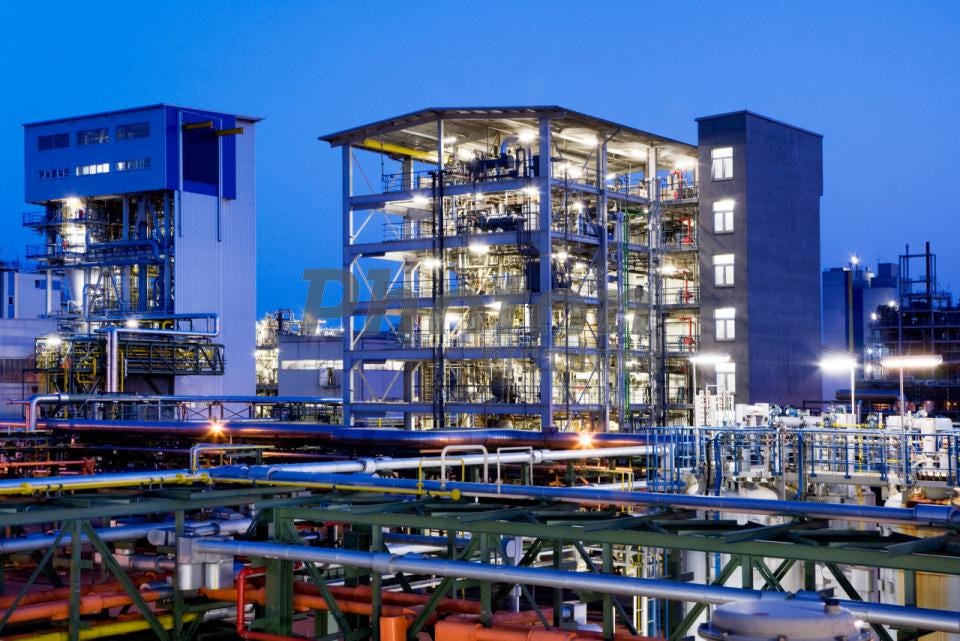Turquoise Ammonia, Work Force Reductions at Wacker, and Recycling Polyurethanes

Pivots
Wacker Chemie AG announced it was progressing with its planned 1200 workforce reduction primarily in administration according to their “Shape the Future” initiative announced last November. Wacker primarily deals in silica based products such as silica particles and silicone polymers and components for solar cells. Wacker also has some biological focused markets, which feels a bit confusing based on the company’s history, but may be a company saving division if competition in the silica and silicones market increases. Momentive, one of the largest silicone makers, went private in 2018 after emerging from a controversial bankruptcy. With Wacker’s cost savings it will be interesting to see how they deploy the saved capital, towards additional investment in biotech or giving the money back to shareholders? With interest rates at an all time low I would hope they have a plan to grow the business as opposed to just returning short term gains to shareholders. The silica/silicones business globally is expected to be impacted significantly by Covid-19.
What is Silica and How is it Different from Silicone?
Silica refers to silicon dioxide, which is essentially very clean sand and it is used in a variety of paints, mortars, repair putty, and liquids as a thickening agent or rheology modifier. Silicones are polymers of silicon, carbon, and oxygen and are often used as sealants in the bathroom as a caulking agent. Silicones are also used as glass adhesives, medical adhesives, and in reactive polymer systems used in coatings. Silicon (this one is the pure element) is used to make transistors for computers and is the second most abundant element on earth after oxygen existing in all its forms. As a polymer silicones are a premium product and are often expensive.

Innovation
Monolith Materials is building a carbon-free ammonia plant in Nebraska. Monolith Materials has industrial production of carbon black from natural gas where a byproduct is hydrogen. Monolith plans to use that hydrogen to power their Haber-Bosch ammonia plant, which is essentially a blue or turquoise ammonia, which means not completely green (it’s ultimately coming from natural gas in a way). Ammonia is used to make ammonium salts such as ammonium nitrate and ammonium phosphate and are key components in fertilizers. Turquoise ammonia would be a move towards a less carbon intensive ammonia process. Monolith is not the only player in the area and many of the chemical giants such as BASF are also entering the market.
As the world transitions towards cleaner sources of energy (solar, wind, geothermal, nuclear) and energy storage becomes more advanced, finding new ways to use natural gas will be important if demand in energy ever wanes. Overall, the future of natural gas looks brighter than coal as coal fired power plants close down and are replaced by other energy generation sources such as natural gas plants. The natural gas power plant will bridge the transition towards non-carbon energy sources.
Circular Economy
Footwear producer Ecco Group is trying to figure out ways to reuse or recycle polyurethane, which is a common material in outsoles, midsoles, and uppers for footwear manufacturers. Ecco joins Nike, Adidas, and just about every other footwear company in trying to develop more sustainable footwear materials. Rothy’s whole product concept is centered around using recycled plastic to make shoes. The concept of a circular economy is powerful for an industry like footwear where a pair of shoes doesn’t typically last more than a year or two if worn everyday. The question is will consumers accept that their shoes have a lifetime if they are constructed from materials that are intended to degrade or repurposed?
What are Polyurethanes?
Polyurethanes are a higher cost plastic than those of polyolefins, but usually lower cost than silicones and polyurethanes can be be both thermoplastic (able to be melt processed) and thermoset (will burn/decompose before it melts). Polyurethanes are versatile and have unique properties such as being able to provide excellent foams, elastomers, and function as high performance adhesives. Polyurethanes are notoriously unstable when it comes to temperature and will often thermally decompose above 180 C. Polyurethanes are used in synthetic leather that feels like the real thing and automotive companies would love to figure out ways to reuse or recycle the material.
An automotive polyurethane guy told me at a conference that the only real leather in a car was where you sat and where your head contacted the headrest and that everything else was a polyurethane. The dashboards, sides and backs of car seats, and side panels that look and feel like leather are actually just polyurethane. I was told that polyurethane chemists have gotten so good at making imitation leather that even they cannot always tell the real thing from synthetic. The American Chemistry Council has some of the best public information on polyurethanes and are the hosts of the Centers for Polyurethane Industries conference.
The Polymerist
If you haven’t subscribed yet, please consider signing up for a newsletter every Tuesday and Friday. If you are enjoying this newsletter please consider telling your friends, family, and coworkers about it. Any topics you want to learn more about? Leave a comment.
All of the opinions are my own and do not reflect the views of any of my employers nor are they investment advice.



